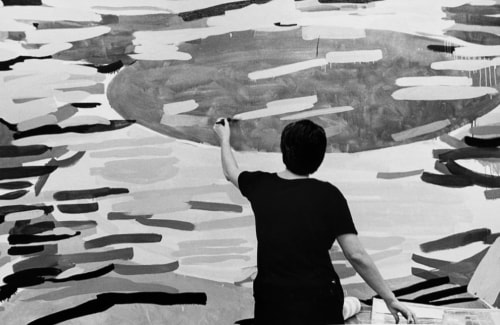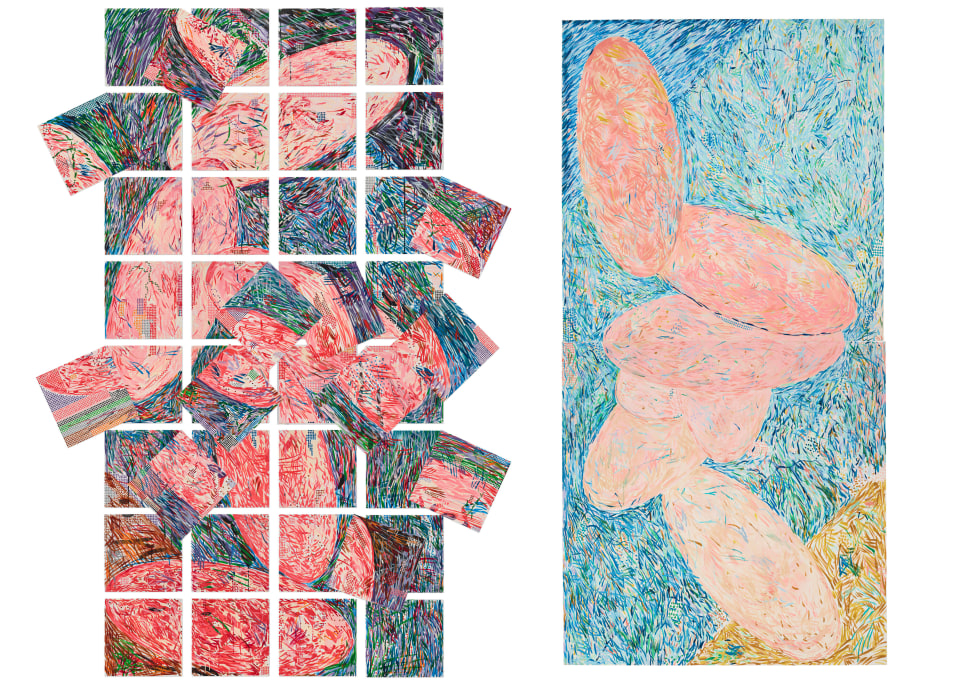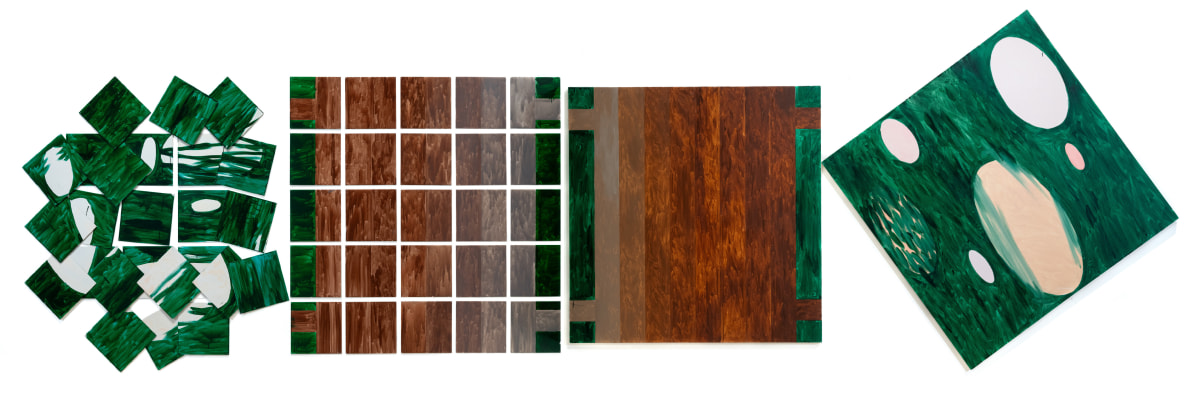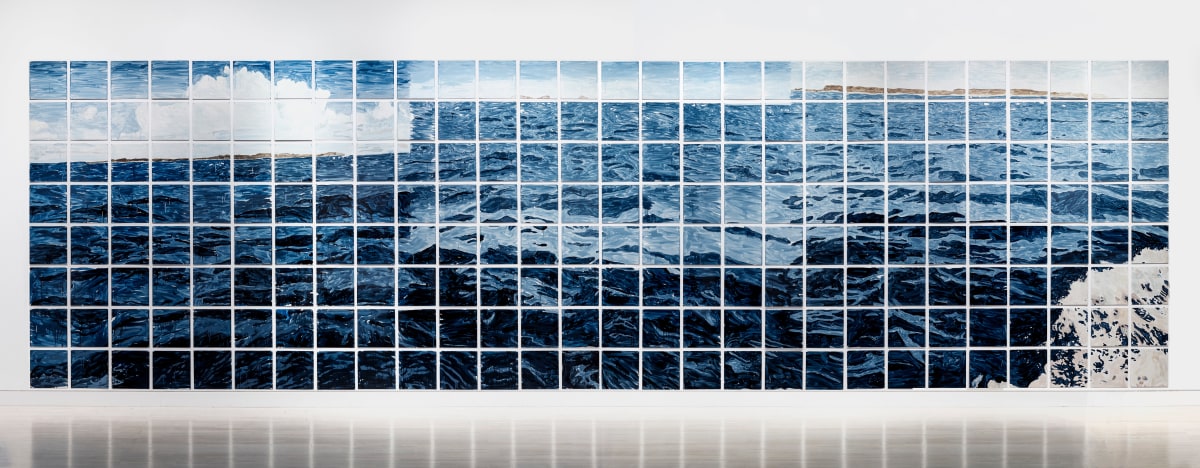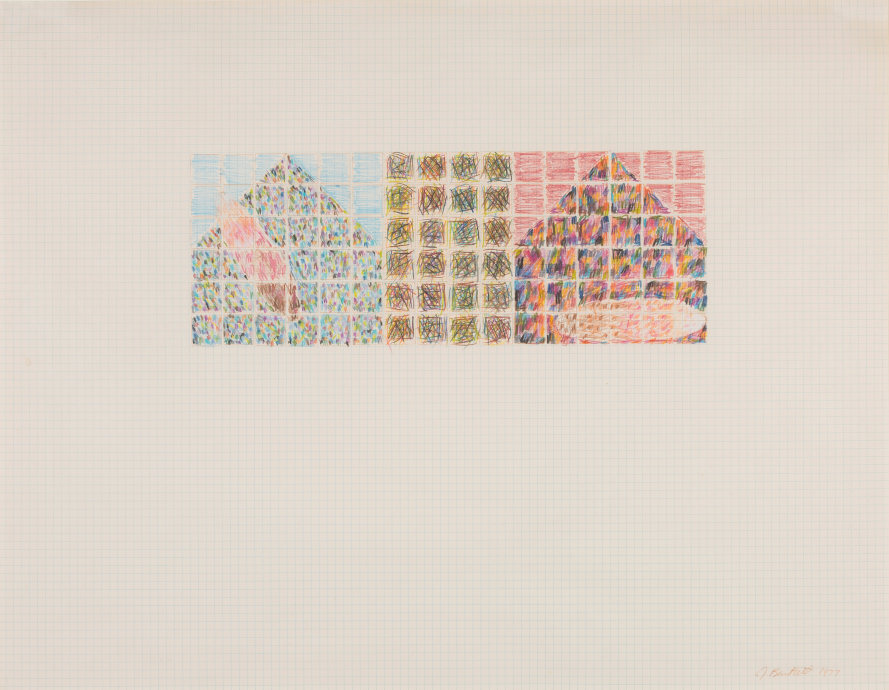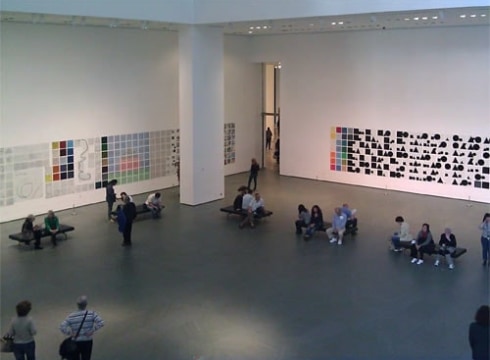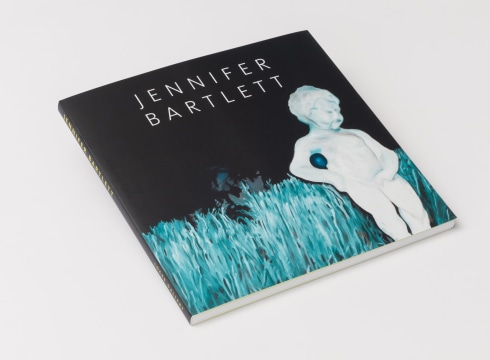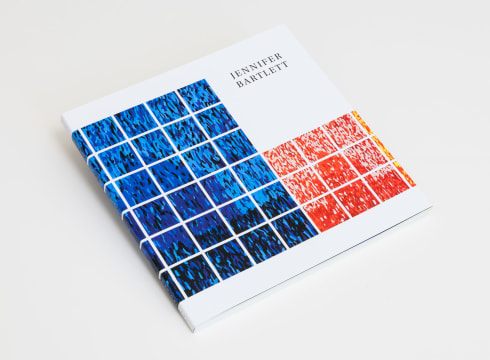
Locks Gallery is pleased to present an exhibition of large-scale works by Jennifer Bartlett from her Swimmers series (1978–1980), alongside her monumental piece, Atlantic Ocean (1984), made up of two hundred and twenty-four steel plates. Jennifer Bartlett: Swimmers will be accompanied by catalogue featuring an essay by Jonathan Fineberg.
Throughout her six decade career, Jennifer Bartlett worked in ambitious, iterative series. With her first major work, Rhapsody (1975–76), Bartlett set out to exhaust every expression of color, line, style, and form — making the simple complex, and the complex simple. In the interim years between Rhapsody and her next well-known series, In the Garden (1980), Bartlett returned to painting on canvas after a decade of almost exclusively painting on enameled steel plates arranged in a grid. During the period in which she produced the Swimmers paintings, she continued her exploration of “banal” signifiers (universal motifs like: house, tree, boat) but softened the contours of her conceptual stratagems in favor of bold, impressionistic brushwork and palettes.
The oblong, flat and fleshy Swimmer motif first appeared in her work in 1977. While in one sense Swimmers are a stand-in for people, they can also be compared to Monet’s haystacks or water lilies and his durational study of light and landscape. Bartlett depicts her Swimmers and the water around them in endless permutations of season, mood and time of day. Like Monet’s late water lilies canvases, in which the viewer becomes immersed in a horizon-less landscape, Bartlett’s Swimmers paintings play with similar disorienting perspectives and scales. Later Bartlett works, like the thirty-foot gridded painting Atlantic Ocean, creates a hypnotic, distorted environment, where the viewer becomes the Swimmer, subsumed in the undulating waves.
Bartlett’s paintings from this period are an exuberant break from the grid-based parameters she set for herself to make Rhapsody. Her colors become more dynamic and boisterous. She combines canvases and steel plates within single works to highlight contradicting states. The works are less well-behaved, reading like cliff-hanger adventure stories, compared to the erudite, rambling timbre of Rhapsody. Time becomes mixed up; pictorial planes shift, overlap and collide. ‘Landscape’ becomes a gymnastic activity, rather than a static suggestion of place.
In works like Swimmers and Rafts, Jumble, Bartlett establishes and then disrupts the grid, misaligning canvases and setting another askant, with Swimmers quietly passing through murky waters. In 1987 Bartlett described her Swimmer as “an object of contemplation,” a formal device used to “make a situation [she] could respond to.” Masterfully, Bartlett keeps abstraction and figuration in familiar, unfussy tension.
Writing in Art in America in 1979, Roberta Smith said that Swimmers Atlanta (the first major work of this series) “does for Bartlett’s sense of touch and gesture what Rhapsody did for her formal vocabulary: scrambles it, makes it more expansive, generous and accessible. It shows her increasingly able to balance lyrical with harsh.” Smith went on to say that the Swimmers works were “a strange ambition, alternately simplistic and encompassing, childlike and grandiose, restricting and liberating.”
The works in this show explore Bartlett’s use of the Swimmers subject during a pivotal period in her career, and how she used it as she did many of her motifs — as a formal and conceptual tool to which she could fix her boundless attention and curiosity.



